Monthly Archive: May 2012
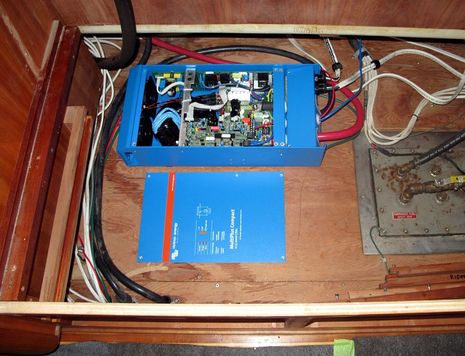
This is not the scene most boaters want to see in the middle of their salon going into Memorial Day Weekend, but at least I can look forward to checking out how well that Victron MultiPlus 12/2000/80 charges and inverts. It may seem crazy to replace the perfectly functional Xantrex Freedom 25 that used to occupy this spot, but it’s part of an aggressive “re-power” plan that’s had me busy recently. Besides the Xantrex has already replaced the broken one on my in-law’s M/V Brilliant — which partially subsidized this upgrade — and I’m nearly as happy pulling cables as I would be lounging on the fine settee that will eventually go back here…
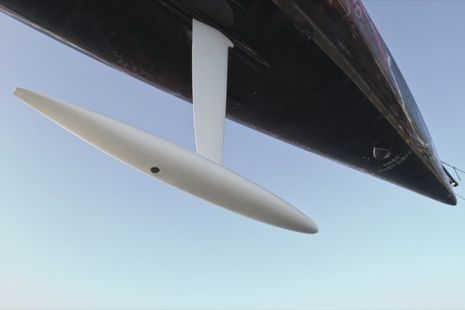
I learned that the Volvo Ocean Racer Puma had a very special speedo when the race started off around the planet last Fall, but was hoping that I or a Panbo guest blogger would get to see the other end of the system when the fleet visited Miami. Well, right now Puma is leaving Bermuda to starboard as it zips across the Atlantic toward Lisbon, and while Panbot Jeffrey Schwartz witnessed her Florida first place and did get some time with major VOR supporter Inmarsat, he was not able to wrangle his way into any racer’s nav station. But let me tell you what I do know about the Nortek Doppler Velocity Log…
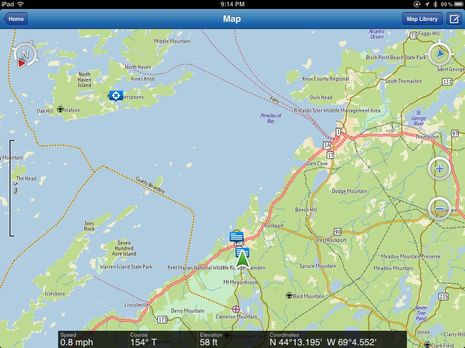
DeLorme just started shipping a new 1.5 version of the inReach satellite messenger, tracker, and distress device that works with an Apple iOS version of the Earthmate app as well as an improved Android version. I again participated in the Beta testing and, though almost all of that was ashore, I’m even more convinced that inReach is going to become a constant cruising companion on Gizmo and many other boats. It’s hard to say whether some improvements are due to the new hardware or the new apps versions or the platforms I’m using them on, but for boat use the combination of inReach 1.5 and even an iPad 1 is totally sweeeeet…
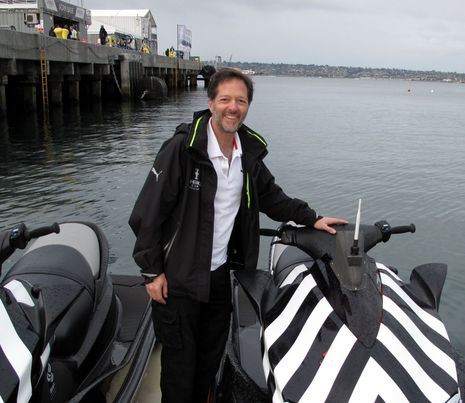
I’ve corresponded with Eric Steinberg for years — and wrote about some of his offshore racing electronics ideas in 2010 — but what a pleasure it was to meet him in San Diego. Aside from overseeing Farallon Electronics and IstarGPS, he is now Director of Electronics Systems for the Americas Cup Race Management and hence responsible for all the high tech gear on some 29 support vessels. Yet it was Eric who took the time to patiently explain the many-layered systems that I tried to lay outexplain in Yachting. He was especially proud of what they managed to squeeze into the “personal watercraft” (PWC) that some of the umpires use to chase the AC45 catamarans (pictured here)…
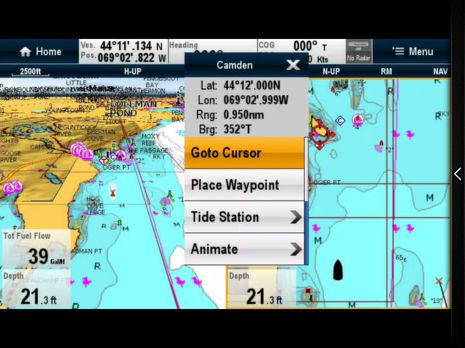
Above is Raymarine’s new RayControl app running on my iPad1 and the screen is purposely busy because I was trying to stress it. While a NMEA 2000 data simulator tells the test e7 MFD it’s going 40 knots up the Bay with one chart window Head Up in 3D and the other North Up, I could still sit in my office — 40 feet and a “deck” away — and select/display a tide station with my finger without a noticeable lag. I did manage to crash the app’s WiFi connection to the e7 once, but Ray actually recommends an iPad2 or better for best performance and get this: RayControl will give you touchscreen control of the new value-priced c-Series MFDs that don’t even have a touchscreen themselves! In short, Ray has done more than make good on its promise of a two-way app…
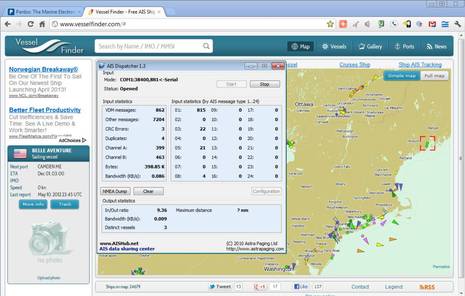
At the end of Wednesday’s discussion about cell-based mAIS — which only works via the Internet instead of direct VHF radio transmissions — I mentioned how I’d set up a real AIS receiver in my lab to forward real AIS target info to those same Internet services. In fact most all the actual AIS targets shown in those screen shots came through my basement. The set up turned out to be very easy and cost nothing as I already had an AIS receiver, a computer, and an Internet connection. The key is the free program AISdispatcher seen in the foreground above, which is offered by AIS Hub data sharing center. That’s their Web site in the background, showing the data I’m contributing along with that of other volunteer stations. But there are lots of holes in the coverage and I’m hoping that more coastal residents and particularly marine businesses will volunteer, and I think that the new mAIS concept could make the effort especially worthwhile…
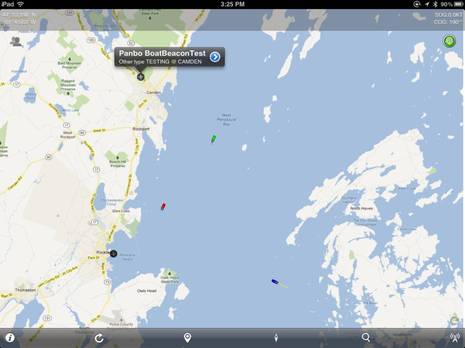
At first Boat Beacon may look like yet another iPad or iPhone app for viewing online AIS tracking services like ShipFinder, but in fact it’s a very new and slightly disconcerting form of AIS transponder. In other words that “Panbo BoatBeaconTest” target seen above is not the test transponder I sometimes run in the lab but simply my iPad running Boat Beacon and using its online connection to send my position, MMSI, and “boat” data to a central server where it’s also getting the regular AIS data for those various vessels in the Bay. The concept doesn’t really have a name yet — except maybe for mobile AIS or mAIS, as I’ll get to — but I think it’s going be huge, and also confusing…
I’ve been using Navionics “Freshest Data” for almost a year now, and while it takes some getting used to and I have experienced a few glitches, my access to up-to-date charts has become nothing...
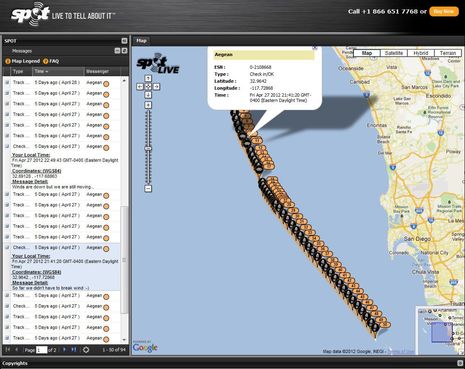
If it’s heartbreaking to see a cheerful-looking Aegean crew underway in fine weather less than 24 hours before they perished — as we discussed earlier this week — isn’t it even worse to know that they sent a fart joke to friends and family by satellite messenger just a few hours before everything went wrong on North Coronado Island? Getting access (via Sailing Anarchy) to Aegean’s Spot Share Page is also how I surmised that they were using a Spot Connect rather than the familiar stand-alone orange model, which is why they could send short custom messages typed on an iPhone, iPad, or Android device. There’s more I learned…
















